Yiddish and Ladino Folksongs: Are they Jewish?
Are folksongs in Yiddish and Ladino necessarily "Jewish"? Yiddish and Ladino are Jewish languages, but what about the songs that speakers of these languages sing?
In this introductory lecture, I take a few representative songs and, together with the audience, develop criteria to define the characteristics of Jewish folksongs. A framework is set up which is used in the rest of the lectures to enable us to appreciate folksongs as critical components of Jewish heritage. On this web-page, we enter the doors opened by each of the songs – one by one – and see which aspects of Jewish heritage they lead us to. See the Jewish Musical Heritage webpage for a more systematic survey of Jewish folksong and a list of online articles regarding Jewish folk music.
Here are the songs we will sing and listen to: Una pastora yo ami; Tum
balalayka; Las ventanas altas; Brontshele; Morenica; Unter dem kinds vigele; Oyfn pripetshik; La rosa enflorese; La cantiga del fuego; Adio querida.
Here is a list of the topics these songs lead us to:
1. How old are Ladino songs? 2. Jewish riddle songs 3. Meaning of lyrics
4. Folksong origins 5. Pan-European themes 6. Who is the "dark girl"? - Is she Jewish? 7. Is black beautiful? 8. Jewish values 9. Biblical "munchies" - Raisins and almonds 10. Composers of Yiddish folksongs - Mark Warshavsky 11. What was kheyder really like? 12. "Borrowed" melodies 13. "Jewish" cities - Salonika 14. How reliable is the Internet as a source of information?
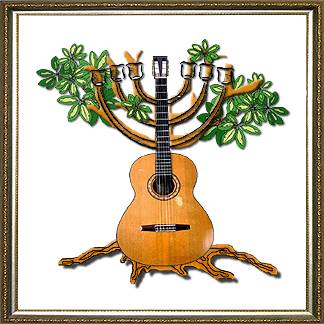
 UNA PASTORA YO AMI [I loved a shepherdess]
UNA PASTORA YO AMI [I loved a shepherdess]
[text with English translation] [text with Hebrew version]
§ How old are Ladino songs?
Who is the shepherdess that the Sephardic Jews love to sing about? Is she connected with the Biblical matriarchs Rebecca amd Rachel who were portrayed as kind, exemplary role-models? Actually, the source of this song is relatively modern, and not connected with our Jewish roots. Many people think that Ladino songs are very old, but a lot of the folksongs are hardly more than 100-150 years old.
"Una pastora yo ami" [I loved a shepherdess] comes from a nineteenth century musical which was written in Greek and translated into Judezmo or Ladino, the language spoken by the Jewish community of the Balkan countries. The original play was written in 1891 by the Greek playwright Koromilas; it was based upon a poem by Georgios Zalokostas. The Judezmo version of the musical was presented in Izmir in 1903, 1905 and 1914.
References
A colloquy on Sephardic music. (2012). The Boston Music Intelligencer.
Cohen, J. R. & Bresler, J. (2009). "The Music of the Sephardim". Early Music America, Volume 15, Number 4.
Nar, Albertos. (1997). "'Una pastora yo ami': An oriental folksong and its origins". In The Jewish Communities of Southeastern Europe from the Fifteenth Century to the end of World War II. Ed. I.K. Hassiotis. Thessaloniki: Institute for Balkan Studies. (Cited in Weich-Shahak, S. [2006] En Buen Siman, Jerusalem: Pardes).
The Greek-Jewish Theater in Judeo-Spanish (1880-1940)
 TUM BALALAYKA [Play balalaika]
TUM BALALAYKA [Play balalaika]
[text with English translation] [text with Hebrew translation]
§ Jewish Riddle Songs
Riddles are traditionally associated with love and courtship. There are two types of Jewish folksongs based on riddles: a series of impossible tasks which the lovers set each other (e.g., the children's song Du meydele di fayns) and an exchange of riddles (e.g., A khosn hot gevolt zayn kale oysklern or Nem mir aroys a ber fun vald, collected by the Russian musicologist Moisey Beregovsky). These are respectively related to the English and Scottish Child Ballads #2 and #1.
Here are two typically Jewish riddles from the song Du meydele du fayns:
(1) Vu iz do vaser on a fish? - In mikve iz do vaser on a fish. [Where is there water without any fish? - In the mikveh there is water without fish]. (2) Vos iz tifer fun a kval? - Di toyre iz tifer fun a kval. [What is deeper than a well? - The Torah is deeper than a well].
Riddles were associated with the courtship and wedding rituals of various Jewish ethnic groups. Here is a wonderful exhibition of illustrated riddle songs sung at Jewish weddings in Italy of the seventeenth and eighteenth centuries: Sonnets of Celebration - Hebrew Wedding Poems and Riddles in Honor of the Bride and Groom.
An unanswerable question asked during the Holocaust was set to the music of Tum Balalayka. It was the Talmudic question "Mah ko mashma lon"? [What is the meaning?] - which was originally featured in the poem by Avrom Reisin describing the difficult life of the Talmudic student.
References:
Mlotek, E. G. (1964b) 'International Motifs in the Yiddish Ballad'. In Dawidowicz, L. et al. (eds) For Max Weinereich on his Seventieth Birthday: Studies in Jewish Languages, Literature, and Society. The Hague: Mouton & Co.
Mlotek, E. G. (1965) 'Traces of Ballad Motifs in Yiddish Folk Song'. In Weinreich, U. (ed) The Field of Yiddish: Second Collection. The Hague: Mouton & Co.
Rubin, Ruth. (1952). Nineteenth-Century Yiddish Folksongs of Children in Eastern Europe.The Journal of American Folklore, 65, 257, pp. 227-254
Rubin, R. (1956). Yiddish riddles and problems. New York folklore Quarterly / Voices / The Journal of New York Folklore, 12, 4.
§ What do the words actually mean?
There is a question and answer sequence in Tum balalayka which doesn't quite make sense: Vos ken vaksn on regn? - A shteyn ken vaksn on regn. [What can grow without rain? - A stone can grow without rain].
Here are several attempts to provide a logical solution to this problem:
♦ In Yiddish there is an expression "a shteyn ligt mir afn hartsn" - literally "a stone lays on my heart;" in other words, "My pain can grow, without any rain." (Beni Warshawsky, Website feedback, May, 2014)
♦ "We used to sing 'A shtayn......' until it was pointed out that the phrase was properly 'farshtayn ken vaksn on regn' [understanding can grow without rain]. It's a very appealing explanation. Has anyone else heard this version?" (David Krycer, Mendele Discussion List, Thu, 23 Oct, 1997)
♦ Bessarabian folksinger Arkady Gendler) sings a different version: Vos ken vaksn on regn? - Hor ken vaksn on regn. [What can grow without rain? - Hair can grown without rain].
♦ Could this question and answer be a "slip of the ear", or "mondegreen"?
"Mondegreens" are misheard lyrics. The term "mondegreen" was coined by Sylvia Wright in a 1954 Atlantic article. As a child, young Sylvia had listened to a folk song that included the lines "They had slain the Earl of Moray / And Lady Mondegreen." As is customary with misheard lyrics, she didn't realize her mistake for years. The song was not about the tragic fate of Lady Mondegreen, but rather, the continuing plight of the good earl: "They had slain the Earl of Moray / And laid him on the green."
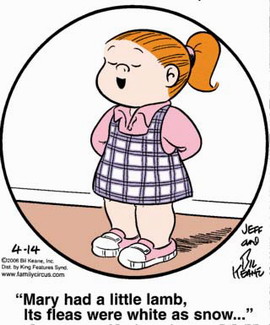
What do you think? Do the lyrics of "Tum Balalayka" make sense? Which version makes most sense to you? Take your pick!
§ Where do folksongs come from?
Unless we have evidence of the exact origins of the song, it's impossible to tell exactly where it comes from. Here are a couple of amusing anecdotes related to "the origins" of Tum balalayka, reported on the Mendele Discussion List:
"A couple of years ago I sang "Tum balalayka" for my Jewish Literature class. My Jewish students, having all been brought up on English, French and Hebrew, had never heard of it. My Vietnamese students … recognized it instantly and were surprised and delighted that I knew a Vietnamese song, even if the words were strange – stranger even than English. One of them came up to me after the class to tell me that while he liked my singing and guitar … very much, he felt I had got the spirit of the song all wrong. 'You must sing it much slower,' he said. 'Vietnamese songs very sad. Very sad, Vietnamese people.'"
Melekh Godfrey, Mendele Discussion List, Mon, 20 Oct 1997
"The following, perhaps related story, was told to me 40 years ago by a famous musicologist whose son was a musico-ethnologist. The son attended a conference where one of the more exciting papers was given by a man who had succeeded in reaching an isolated South American Indian tribe, never before visited by white men with a battery operated tape recorder and recorded their music. When he played the tape, one of the audience caused a disturbance by jumping up and shouting, 'Those are Polish Jewish Hassidic melodies.'
The story becomes more interesting when the researcher presented a paper a few years later in apology. The new story, prompted by the reference to Hassidic melodies, was as follows. One of the older Indians remembered that some 60 years earlier a peddler had come to the village and was trapped there for a long time, more than a month, perhaps even as long as two. At that time, as they warmed themselves, taking shelter from the rain, he would sing to them and teach them his songs."
Robert Werman, Mendele Discussion List, Tue, 21 Oct 1997
Alexander Zlatkovski asks two interesting questions concerning the origin of the song:
1) Why does the refrain mention the balalayka, which was a traditional Russian instrument and not commonly used in klezmer bands?
2) What does "tum" mean? It is neither a Russian nor Yiddish word. Could it refer to the sound made when strumming a balalayka?
For another example of a "wandering" folksong, see the discussion concerning Ma nochal base'udah hazot? [What shall we eat at this feast?], an allegedly Libyan traditional song with roots deep in Hasidic tradition.
 LAS VENTANAS ALTAS [The high windows]
LAS VENTANAS ALTAS [The high windows]
/ BRONTSHELE [Brontshele]
§ Night visiting songs - a pan-European genre
These two songs - in Ladino and Yiddish respectively - embody the familiar folklore theme of a young man knocking on his love's door at night. The large number of songs centered around this theme are generically classified as "night visiting songs": this is a pan-European genre, and can probably be found in folksongs the world over. E. & J. Mlotek cite a study by Y. L. Cahan (1912) showing that this song motif has been traced back to the sixteenth century, with German and Czech parallels. The earliest night-visiting songs referred to a medieval practice when husband and wife did not live together, the wife remaining with her husband only at certain times. (Rubin)
Many of the night-visiting songs referred to lovers, as well as to legitimate spouses. In traditional Spanish – and Sephardic – homes, the walls and closed doors behind which respectable maidens were "cloistered" provided a challenge for intrepid lovers: we can infer this from many (often overlapping) folksong texts calling upon the young lady to open her door: e.g., "Avrix mi galanica" ["Abrimi galanica"] (or "Torondon"), "Avre tu puerta cerrada", "Avre este abajour bijou", "Por la tu puerta yo pasi", "Donula". Sometimes the images take on metaphorical meaning: "Las ventanas altas" is traditionally sung at weddings as the couple enter their bridal chamber for la noche d'encierro [the night of confinement / incarceration / enclosure].
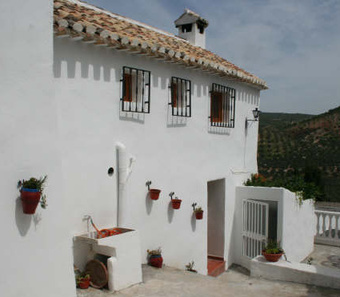
At times the lady is acquiescent; at times less so. Sometimes the lover is presentable; sometimes a drunkard. The Ladino song "Abrimi galanica" and the Yiddish song "Brontshele" both feature a dialog between a young man knocking at the door and the young lass who is afraid of a member of her family - father, mother, brother, etc. (The song Brontshele is often referred to by the first line: Ver klapt es azoy shpet bay nakht? [Who's knocking so late at night?]. A variant is "Klip-klap in goldn tir" [Knocking at the golden door], and the girl may be called any one of a string of Yiddish names: Rifkele, Nekhamele, etc.).
A feature of many of the "night visiting songs", besides the act of knocking at the door, is the sound of the cock crowing in the morning. In some songs this is simply a signal that it is time for the lover to leave (e.g., "I'm a Rover" [Roud 3135]). However, the bird often signifies that the lover is a ghost, returning to his human love until he is forced to leave at sunrise (e.g., "The Grey Cock" [Child 248, Roud 179] or "Blow the Candles Out" [Roud 135 / 368]). According to "The Penguin Book of English Folk Songs", "the idea that such revenants must go again 'from the world of pity to the world without pity' when the birds cry at dawn is an ancient folklore notion that has spread from the Orient, through the Balkans, as far west as Ireland." An exquisite setting of the return of the ghostly soldier is "Wo die schonen Trompeten blasen" [Where the splendid trumpets play], one of the ballads in the "Knaben Wunderhorn" [Youth's Magic Horn] collection which Gustav Mahler set to music.
A number of parodies have been based upon the "door knocking" theme. A Lodz Ghetto parody cited by Gila Flam begins: Ver klapt do azoy shpet bay nakht? / Es klapt der geto hunger [Who knocks so late at night? It is the Ghetto hunger].
References
Mlotek, Ch. & Slobin, M. (Eds.) (2007). Yiddish folksongs from the Ruth Rubin Archive. Wayne State University Press.
 MORENICA [Little dark girl]
MORENICA [Little dark girl]
[text with English translation] [text with Hebrew version]
Morenica is one of the most popular Sephardic wedding songs. In this lecture, we will concentrate on its origins and the values it relates; the wedding aspect will be related to in the lecture on Jewish Weddings.
§ Who was "Morenica"?
The Ladino songs Morenica or La morena derive from a Spanish renaissance folksong about a Moorish girl [dark maiden] which was recorded in the seventeenth century collection Arte de la lengua castellana española by Gonzolo Correas (1625) and incorporated into a Spanish comedy by Lope de Vega: Servir a Señor Discreto. Both end with the lines, Morena a mi me llaman los marineros; Si otra vez me llaman, me voy yo con ellos. [The sailors call me "dark one"; if they call me once more, I will go with them"].
There is also a "dark girl" in Jewish tradition: the "sh'charchoret" from the Biblical "Song of Songs" (1:5). Were these two girls one and the same, or related by chance? Who came first? Musicologist Shoshana Weich-Shahak quotes speculation by Margit Frenk that the renaissance Spanish lyrical songs were influenced by the heritage brought to Spain by the early Jewish settlers. So the Spanish morenica could actually have derived from the Biblical sh'charchoret whom we know!
Here is a video of "Morena me llaman" [I'm called the dark one], a variation of the song "Morenica" (above). Much of the text is similar, but the melody is different (see the note on variable texts in the Musical Heritage page).
References
Frenk, Margit. (1987). Corpus de la lírica popular hispánica (Siglos XV a XVII). (Nos. 138-142). Madrid.
Weich-Shahak, S. (2006). En Buen Siman! Panorama del Repertorio Musical Sefaradi. Jerusalem: Pardes.
Ascher, Gloria J. (2001). Sephardic Songs, Proverbs, and Expressions: A Continuing Tradition". Shofar: An Interdiscipliary Journal of Jewish Studies, 19,4: 25-39.
§ Is "black" beautiful?
The phrase "black is beautiful" sounds quite modern. However, this is actually an age-old issue which was discussed by Biblical commentators, notably Rashi. In his commentary about the heroine of the Song of Songs (1:0) Rashi appears to assume that "black" has negative connotations, but in Numbers (C.12) he argues that "Cushite" [Ethiopian / black woman] is equated with beauty.
In Spanish folklore, "whiteness" is associated with purity, while "darkness" is associated with the spice of life. C.f., the Spanish proverb: "Pepper is eaten by kings, while snow is trampled by horses." Ladino songs reflect the Spanish attitude of (a) "dark" piquancy as opposed to (b) angelic "whiteness":
(a) Morenica sos, como la pimienta Tu sangre es dulse en mi alma entra. De ves qua te veyo de quara en el espejo me s'arranqua l'alma por darte un bezo Morenica sos, como la pimienta | You are brown, like pepper, Your blood is sweet it enters my soul Whenever I see you looking in your mirror, my soul has an impulse to give you a kiss. You are brown, like pepper. |
(b) "Arvoles lloran": Blanca sos, blanca vistes, |
White you are, white you wear, |
References:
Rayner, J. (1997). An Understanding of Judaism, Berghahn Books. "The Cushite Woman".
Wardropper, B. (1960). The color problem in Spanish traditional poetry. Modern Language Notes, 75, 5, pp. 415-421.
 UNTER DEM KINDS VIGELE [Beneath the child's cradle]
UNTER DEM KINDS VIGELE [Beneath the child's cradle]
[text with English translation] [text with Hebrew translation]
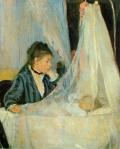
Berthe Morisot - "The Cradle" (1873)
§ Toyre iz di beste skhoyre
The folk lullaby Unter dem kinds vigele reflects the Jewish way of life: learning, piety and making a living. The aphorism "Toyre is di beste skhoyre" [Torah is the best merchandise] is referred to in many other lullabies - such as Rozhinkes mit mandlen (Goldfaden), Yankele (Gebirtig) or Ven ikh volt gehot dem keysers oytsres (Gordon) - and in songs such as Simkhes toyre (Warshavsky), In kheder (Milner) and Di Toyre.
Here and here are discussions of the possible origin of this saying. For a fuller discussion of songs connected to the giving of the Torah, see the lecture on Shavuot.
§ "Raisins and almonds" in the Bible
"Raisins and almonds" are not referred to as a unit in the Bible, but there are many references to the fruit in different contexts. "Raisins" are mentioned with respect to nourishment: Chronicles I: 12,40; Samuel II: 16,1; Samuel I: 30,12. "Almonds" are connected with Divine intervention in Parashat Korach (Numbers 17,23). The "vine" conjures up the idyllic Biblical picture of peace, whereby each person sits under and enjoys the fruit of one's "vine and fig tree" (Kings II, 18:31; Micha, 4:4).
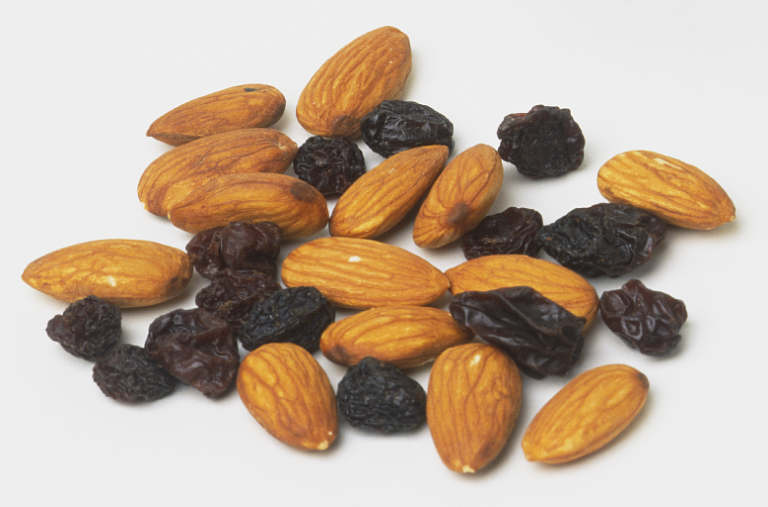
 OYFN PRIPETSHIK / DER ALEF BEYS [At the hearth]
OYFN PRIPETSHIK / DER ALEF BEYS [At the hearth]
[text with English translation] [text with Hebrew translation]
§ "Instant" folksongs
It is popularly believed that folksongs are anonymous and old, but this is not necessarily so. We know who composed many of the songs which are regarded as "folksongs"; moreover, some songs become "folklorized" very swiftly. A case in point is "Oyfn Pripetshik", composed by Mark Warshavsky.
Warshavsky (1848-1907) was a trained lawyer who "dabbled" in composing songs on Jewish themes. Sholem Aleichem, whom he met in cultural evenings in Kiev, persuaded him to publish these songs – in collections dubbed Yiddishe Folkslider. His songs were immensely popular - "instant" folksongs! Here is an interesting video about Warshavsky and his songs, produced by the "Yiddish Daily Forward":
§ What was kheyder really like?
Kheyder was not necessarily as idyllic as the image conjured up in "Oyfn pripetshik". Read these reminiscences to see how realistic Warshavsky's song was:
♦ G.W. – Scroll down to "Teachers and Kheyders"
♦ Dokshitz: Its Jews, Traditions, Holidays
♦ Allan Nadler – Forward review of Michael Wex's book Born to Kvetch (Scroll down to: "Born to Kvetch begins with a chapter …").
A song which presents a different view from that of Oyfn Pripetshik is Ikh vil nit geyn in kheyder, written by Warshavsky's friend and mentor, Sholem Aleichem.
Kheyder and rebe are the Yiddish terms in the widespread Jewish practice of teaching the Torah to young boys. The song Hamori [The Teacher], by Shlomo Mahdon, describes the Yemenite equivalent of the rebe, while Etslenu bakfar Todra [In our village Todra], by Yehoshua Sobol and Shlomo Bar, paints a picture of little boys learning Torah in the Atlas Mountains.
 LA ROSA ENFLORESE / LOS BILBILICOS [The rose blooms / The nightingales]
LA ROSA ENFLORESE / LOS BILBILICOS [The rose blooms / The nightingales]
[text with English translation] [text with Hebrew version]
 TSUR MISHELO ACHALNU [Rock from whose we have eaten]
TSUR MISHELO ACHALNU [Rock from whose we have eaten]
[text with English translation] [Hebrew text]
§ Contrafacta - "Why should the devil have all the good music?"
This question was ostensibly asked by Martin Luther in defense of the practice of contrafacta, i.e., the setting sacred texts to the tunes of secular songs. Although there is no documentary evidence for this actual remark, the Church in the Middle Ages regularly borrowed music or texts from secular for use in religious contexts, such as the Protestant (Lutheran) chorales.
This practice has also been characteristic of Jewish music, from the Middle Ages to this very day. The borrowing of Sephardic music for the recital of piyutim [liturgical poetry] was especially popular. There are actually two processes: contrafactum [singular] refers to a new text written for the melody of a (well-known) song; while hat'ama [adaptation] refers to the singing of an existing text to the tune of another song. The piyut Tsur mishelo achalnu [The Rock from Whose we have eaten], an anonymous text enhancing Birkat Hamazon [Grace after Meals], belongs to the second category: it is popularly sung around the table to the melody of the cantiga, "La rosa enflorese" [The rose is blooming] (alternatively named "Los bilbilikos" [The nightingales]) on Shabbat and festivals. Similarly, the piyut Adon Olam [Lord of the Universe] (discussed in the lecture "Kings and Queens") is sung to the melodies of many different secular songs, including Las ventanas altas, above. Listen to the many melodies sung to these two piyutim by different communities of Jews around the world at the website "An Invitation to Piyut."
Here is a video of "La rosa enflorese" by soprano Victoria de los Angeles, whose recordings of the many different musical traditions of Spain have been compiled in a four-volume set entitled "Songs of Spain". This is followed by a video of "Tsur mishelo achalnu" sung by Rabbi Hagay Batzri, with visuals reflecting the meaning of the piyut - thanking God for the abundance of food on the Shabbat table and a prayer for the rebuilding of the Temple. (The visual quality of both videos is not very good, but when shown consecutively they convey the essence of contrafacta). The third video features a song called "The Swallow", composed by Richard Farina and sung by his wife Mimi and her sister Joan Baez: the same Ladino/Spanish melody, but completely different lyrics.
(By the way: this blog muses upon a possible connection between La rosa enflorese, Tsur mishelo achalnu and the Hasidic adaptation of the Hungarian folksong Szól a kakas már [The rooster is crowing]).
References
A colloquy on Sephardic music. (2012). The Boston Music Intelligencer. [Origins of La rosa enflorese]
Cohen, R. We're playing their song. Moment, 1994.
Seroussi, E. & Weich-Shahak, S. Judeo-Spanish contrafacts and musical adaptations: The Oral tradition. Orbis Musicae X (1990-1991), 164-193
 LA CANTIGA DEL FUEGO [The song of the fire]
LA CANTIGA DEL FUEGO [The song of the fire]
[text with English translation] [text with Hebrew translation]
§ Salonika: From Brilliance to Devastation
Many of the folksongs we sing are actually portrayals of historical events. An example is the great fire of Saloniki:
"Of the brilliance and grandeur of this famous Jewish community, nothing remained but mountains of ashes. Everything was lost, everything disappeared."* There had been quite a few extremely destructive fires in the late nineteenth century. However, "it was the Great Fire of 1917 which dealt the Hebrew community a blow from which it never recovered, for it left 53,737 Jews homeless and destroyed the administrative offices of the community and of the Chief Rabbinate, thirty synagogues, the installations of the philanthropic institutions, the buildings of the Alliance School and another ten schools." (See the web-pages describing the fate of the Jewish community in Salonika).
The song La cantiga del fuego ascribes the Great Fire to desecration of the Shabbat. For a song with a different slant, see El Dió la mate esta Grega [May God kill the Greek woman].
References:
Ben-Yakov and Aron Baruh, Moral i Edukasyon Djudia (Salonika, ca. 1925), 93-94 [ Judeo-Spanish]; quoted in David M. Bunis, Ke Xaber? A Newsletter from Adelantre 5-6 (Spring/Summer 1977), 4.
.jpg)
 ADIO QUERIDA [Farewell, my love]
ADIO QUERIDA [Farewell, my love]
[text with English translation] [text with Hebrew version]
§ How reliable is the Internet as a source of information?
Here are two different accounts of the origin of the song Adio. Which one do you think is correct?
1. "The melodic comparison here is striking. There can be no argument that Verdi somehow heard the melody of this famous Ladino song and incorporated it into this aria. The elements in common are too clear. The question more interesting to answer is: Where, and how, did Verdi hear this song?" [Sharon Azrieli]
2. "Sephardic music is not, strictly speaking, 'early'. While some Ladino and Hebrew texts can be traced to medieval Spain, none of the tunes can; one song, Adio kerida, actually derives from a Verdi aria." [Catherine Madsen].
ANSWER
Lots of people think that Verdi learnt from the Jews, but the opposite is the case! (See the two references below). In the meantime, Adio has been thoroughly "converted", and is now one of the most popular songs in the Ladino "canon".
References:
Cohen Serrano, M. (1994). "'Adio Kerida' Julie", Aki Yerusahalyim 50: 48-49
סרוסי, א. (תשנ"ט). המוסיקה של השיר העממי בלדינו. פעמים 77: 5-19
To conclude, here is "Adio Querida" sung by Kohava Levy, mother of Yasmin Levy, with whose video this webpage began.
So long, adio, and hoping to see you at the lectures!


